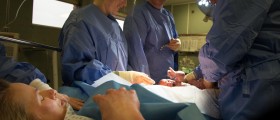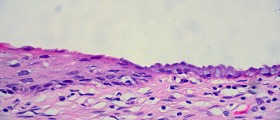
Womb Prolapse
Pelvic floor muscles and supporting ligaments keep the womb in its place. When these muscles and ligaments begin to weaken or loose their elasticity, the womb starts to drop down into the vagina and may even protrude from the vaginal opening. This condition is called prolapse of the womb. It commonly occurs around the menopause.
Symptoms of Prolapsed Womb
Symptoms generally include vaginal discomfort; also, ache in the pelvis may occur. Some women with a prolapsed womb do not have any symptoms while some may experience difficulties with sexual intercourse, feeling of pressure on the bladder, feeling of something coming down into the vagina and, in rare cases, the cervix may protrude from the vaginal opening.
Risks
Prolapsed womb is usually seen in women who have had vaginal delivery, especially delivery of a large infant, since it weakens vaginal supports. Reduced level of oestrogen after the menopause may increase the risk of prolapsed womb. Pelvic floor may be weakened in obese women, women suffering from chronic cough or constipation, which can lead to prolapse of the womb.
Surgery for Prolapsed Womb
Treatment of choice to repair your pelvic floor would be surgery. Sometimes, prolapsed womb can be treated with an internal support pessary. A pessary is plastic, ring-shaped supportive device. Pessary ring can be placed into the vagina in order to support the womb and to relieve the symptoms. Pessaries must be regularly replaced by a gynecologist. Shelf pessaries are suitable for women with enlarged vaginal opening since the ring may fall out. There is some evidence that pessaries prevent progression of the prolapsed womb and may even reverse it.
Pelvic floor repair depends on the severity of womb prolapse. In case of cystocoele or rectocoele, a doctor needs to remove vaginal skin from rectum and/or bladder and eliminate some of the skin. After that, vagina is restored into its original position.
Vaginal hysterectomy is performed in cases of severe womb prolapse, where uterus is removed through the vagina and the support ligaments are tightened. Sometimes, if there is a lesser degree of prolapsed womb, only cervix may be removed. This is known as Manchester repair or Fothergill procedure.
Patients stay in hospital for about a week to 10 days after the surgery. They have a catheter introduced into the bladder and bandage in the vagina as well as the drip in the vein. Stitches dissolve during the first three weeks. Patients must visit their gynecologist six weeks after the procedure.

















Your thoughts on this
Loading...